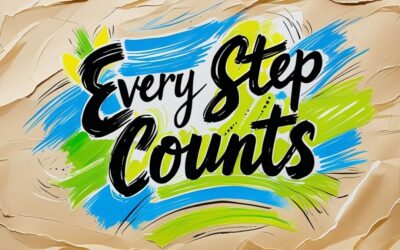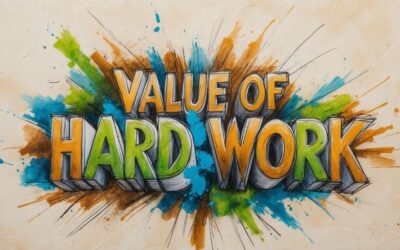- The Uninvited Roommate in Your Head
- Where Does This Annoying Roommate Come From, Anyway?
- The Ghost of Failures Past
- The Distorting Mirror of Comparison
- Giving Your Inner Critic a Name and a Silly Hat
- Thank You for Sharing, Now Please Be Quiet
- Building Your Case: The Evidence Log
- The Five-Second Rule to Outsmart Your Brain
- Reclaiming the Word ‘Failure’
- Tending the Garden of Your Mind
- The Astonishing Power of One Little Word: “Yet”
- The Radical Act of Self-Compassion
- Connecting to a ‘Why’ That’s Bigger Than Your Fear
- The Symphony That Only You Can Play
What if the biggest, most persistent lie you’ve ever been told is one you tell yourself every single day?
That’s a heavy opener, I know. But stick with me. We’re going somewhere important with this. We all have this voice inside our heads. Sometimes it’s a helpful guide, a moral compass. But other times? Other times it’s a heckler. A critic. A relentless doubter that seems to have a Ph.D. in our every perceived flaw and past mistake. This episode is about that voice. It’s about understanding it, taming it, and finally, turning down its volume so you can hear the music that’s been playing underneath it all along. This is our journey into overcoming self-doubt, not by fighting a war against ourselves, but by learning to believe in the quiet, unshakeable inner strength that is so profoundly, wonderfully you.
The Uninvited Roommate in Your Head
Let’s be honest, self-doubt feels incredibly personal, doesn’t it? It feels like a unique flaw, a secret shame that we’re the only ones carrying. We look at other people—on social media, at work, in our families—and they seem so sure, so confident. It’s like they got the instruction manual for life and ours got lost in the mail. But here’s the truth, the capital ‘T’ Truth: that voice, that feeling of “I’m not good enough,” “I’m going to fail,” “Who am I to even try this?”… it’s not a personal failing. It’s part of the human operating system. It’s standard equipment. It’s the uninvited roommate that comes with the lease on being alive.
Where Does This Annoying Roommate Come From, Anyway?
So if everyone has this, where did it come from? Why are we wired this way? Part of it is ancient programming. Think back to our ancestors on the savanna. The person who thought, “Hey, I bet I can pet that saber-toothed tiger!” probably didn’t pass on their genes. The one who thought, “Whoa, big teeth, pointy claws, maybe I should stay hidden in this cave,” did. Caution, hesitation, and a healthy dose of “what if this goes wrong?” were survival mechanisms. Your brain isn’t trying to sabotage your dream of opening a cupcake shop; it’s trying to keep you from being eaten by a metaphorical tiger. Its primary job description, for millennia, has been “Keep this human alive,” not “Help this human thrive and feel fulfilled.” The job description is just a little outdated for our modern world.
The Ghost of Failures Past
Then there’s your personal history. Your brain is a meticulous, if somewhat biased, record-keeper. It remembers that time in third grade you spelled “vacuum” with one ‘c’ at the spelling bee and everyone laughed. It remembers the project that flopped at work, the relationship that ended, the time you tried a new hobby and felt clumsy and awkward. It keeps a highlight reel of your fumbles and failures, and it loves to play it on a loop whenever you’re about to try something new and scary. It’s not trying to be cruel. It’s trying to protect you. It’s saying, “Remember last time? That hurt. Let’s not do that again. Let’s stay here where it’s safe, where we know the terrain.” The problem is, “safe” is also where stagnation lives.
The Distorting Mirror of Comparison
And then, of course, there’s the big one. The gasoline on the fire of self-doubt in the 21st century: the comparison trap. We live our messy, complicated, behind-the-scenes reality while constantly scrolling through everyone else’s curated highlight reel. We compare our chapter one to someone else’s chapter twenty. We see their polished “after” photo without any context of the messy, grueling “before.” We see the promotion, not the years of late nights. We see the perfect family vacation, not the argument that happened in the car on the way to the airport. Social media, and society at large, creates a distorted mirror. We look at it, then we look at ourselves, and we think, “Why don’t I measure up?” We’re comparing our raw footage to their final, edited movie trailer, and it’s a game we can never, ever win.
Giving Your Inner Critic a Name and a Silly Hat
So we have this voice, born of ancient survival instincts, fed by past pains, and supercharged by modern comparison. What on earth do we do about it? The first step, and this is going to sound counterintuitive, is not to fight it. When you wrestle with a phantom, you just get tired. When you argue with your inner critic, you’re validating its importance. You’re giving it a seat at the table. Instead, let’s try something different. Let’s observe it. Acknowledge it. Maybe even get a little… silly with it.
I want you to try this. The next time that voice pipes up, “You can’t do this, you’re going to make a fool of yourself,” I want you to externalize it. Give it a name. Not something scary, like “The Demolisher,” but something mundane or ridiculous. Call it Gertrude. Or Bartholomew. Or Marvin. Picture Marvin. What does he look like? Maybe he’s a grumpy little gnome with a spreadsheet, constantly calculating risk. Maybe he’s a nervous, pencil-pushing bureaucrat from the Department of Internal Safety.
Now, take it a step further. Change the voice. Instead of hearing it in your own authoritative, serious internal tone, imagine Marvin the gnome saying it in a squeaky, high-pitched voice. Or imagine the words being sung by a barbershop quartet. Or imagine Donald Duck quacking your deepest insecurities at you. “You’re not qualified for this job!” sounds a lot less intimidating when it’s coming from a cartoon duck in a sailor suit. The point of this isn’t to be flippant; it’s to create separation. That voice is not you. It’s a part of your brain’s programming. It’s a thought, and you are the thinker of the thought, not the thought itself. By making it ridiculous, you rob it of its power. You turn the scary monster under the bed into a goofy sock puppet.
Thank You for Sharing, Now Please Be Quiet
Here’s another powerful reframe. Instead of fighting the voice, try thanking it. I know, it sounds crazy. Why would you thank the very thing that’s holding you back? But remember its origin. It’s trying to protect you. It’s that overzealous, ancient security guard. So when it pipes up, try responding internally with a calm, “Thank you for your concern. I know you’re trying to keep me safe. But I’ve got this.”
It’s like having a backseat driver who’s constantly screaming, “Brake! Watch out! Slow down!” If you scream back, “Shut up! I know how to drive!” you create a stressful, chaotic car ride. But if you say, calmly, “I appreciate you looking out for me. I see that car too. I’m handling it,” you acknowledge the input without handing over the steering wheel. You are the driver of your life. The inner critic can be a passenger, but it doesn’t get to touch the controls. Acknowledging it disarms it. You’re not fighting, you’re leading.
Building Your Case: The Evidence Log
Our brains have something called a negativity bias. It’s that old survival instinct again. We are wired to pay more attention to threats and negatives than to positives. You can get ten compliments and one criticism, and what do you lie awake thinking about at 2 a.m.? That one criticism. Your self-doubt thrives on this bias. It conveniently forgets all the times you succeeded, all the challenges you overcame, all the things you did right. So, you have to become a deliberate collector of evidence to the contrary.
I want you to start an Evidence Log. This can be a physical notebook, a file on your computer, a note on your phone. Whatever works. And every single day, I want you to write down at least one thing—just one—that proves your inner critic wrong. Did you handle a difficult conversation with grace? Write it down. Did you finish a workout even when you wanted to quit? Write it down. Did you learn a new chord on the guitar, cook a decent meal, make a colleague laugh, or just get out of bed on a tough day? Write. It. Down.
At first, this will feel awkward. Your brain will say, “That doesn’t count, it was too small.” Ignore it. Write it down anyway. Over time, you will build a mountain of undeniable, factual evidence of your competence, your resilience, your worth. And when your inner critic starts its usual song and dance, you can mentally open your Evidence Log and say, “Actually, Bartholomew, your data seems to be incomplete. Let’s review the facts.” You’re not fighting with feelings; you’re countering fiction with fact.
The Five-Second Rule to Outsmart Your Brain
Self-doubt creates hesitation. And in that gap of hesitation, the critic swoops in and builds a nest. You have an idea—”I should speak up in this meeting.” Then comes the pause. Should I? What if I say something stupid? No one wants to hear from me. And boom. The moment is gone. The opportunity is lost. The doubt has won.
We have to learn to close that gap. One of the most powerful tools for this comes from Mel Robbins, and it’s called the 5-Second Rule. The concept is simple: The moment you have an instinct to act on a goal, you must physically move within five seconds, or your brain will kill the idea. So, the thought is “I should go talk to that person at the networking event.” Your brain starts to boot up the doubt-virus. You go, “5… 4… 3… 2… 1…” and you move. You take one step. You turn your body. You do something physical to interrupt the pattern of hesitation and launch yourself into action.
Why does this work? It’s a form of metacognition—a way to outsmart your own brain’s habit loops. The counting distracts you from the excuses, focuses you on the goal, and prompts you to act. Action is the mortal enemy of self-doubt. Doubt thrives in the stagnant waters of overthinking. Action is a fresh current that washes it away. You can’t think your way out of self-doubt; you have to act your way out of it. And you don’t have to feel confident to act. You can act while feeling terrified. Courage isn’t the absence of fear; it’s acting in spite of it.
Reclaiming the Word ‘Failure’
Let’s talk about the F-word. Failure. The inner critic uses the fear of failure as its primary weapon. It holds it over our heads like a guillotine. But what if we completely changed our relationship with failure? What if failure wasn’t a verdict on our worth, but simply… data?
Thomas Edison, when asked about his thousands of failed attempts to create a viable light bulb, famously said, “I have not failed. I’ve just found 10,000 ways that won’t work.” He saw each “failure” not as a dead end, but as a stepping stone. It was information that guided his next attempt. Sara Blakely, the billionaire founder of Spanx, says her dad used to ask her and her brother at the dinner table every week, “What did you fail at this week?” If they didn’t have anything to report, he would be disappointed. He taught them that a lack of failure meant a lack of trying. He reframed failure as a sign of growth, of pushing boundaries, of living a full and interesting life.
When you try something and it doesn’t work, you have a choice. You can let your inner critic say, “See? I told you so. You’re a failure.” Or you can say, “Interesting. That approach didn’t work. What did I learn? What data did I gather? What can I try differently next time?” This shift turns every stumble into a lesson. It transforms a source of shame into a source of wisdom. There is no failure, only feedback. Your worth is not determined by the outcome of your efforts. Your worth is inherent. The effort itself is the victory.
Tending the Garden of Your Mind
Imagine your mind is a garden. Your thoughts are the seeds. If you constantly allow the seeds of doubt, negativity, and criticism to be planted, what kind of garden are you going to have? You’ll have a garden full of weeds that choke out all the beautiful flowers. Overcoming self-doubt isn’t just about pulling the weeds; it’s about actively planting and nurturing the flowers. This means curating your inputs.
Who are you listening to? Are your friends lifting you up or subtly putting you down? Does the content you consume—the podcasts, the books, the social media feeds—make you feel inspired or inadequate? You have to be a ruthless gatekeeper for your own mind. Unfollow the accounts that trigger your comparison monster. Spend less time with people who drain your energy and more time with those who fill your cup. Listen to podcasts like this one! Read books that expand your mind. Watch videos that teach you something new.
Fill your garden with seeds of possibility, encouragement, and strength. When your mind is saturated with positive, empowering messages, there’s simply less room for the doubt to take root. You are what you consume, and that applies just as much to information and energy as it does to food.
The Astonishing Power of One Little Word: “Yet”
This next tool is so simple it’s almost deceptive, but its impact on your neural pathways can be profound. It’s the simple act of adding the word “yet” to the end of your self-doubting statements. This comes from the work of Carol Dweck on growth mindset.
So, the inner critic says, “I don’t know how to do this.”
You add the word: “I don’t know how to do this yet.”
The critic says, “I’m not good at public speaking.”
You add the word: “I’m not good at public speaking yet.”
“I don’t understand this concept.”
“…yet.”
“I haven’t figured this out.”
“…yet.”
Do you feel that subtle shift? One tiny word transforms a permanent, dead-end statement into a temporary, hopeful one. It reframes the situation from a fixed state of being into a point on a journey. “I can’t” is a brick wall. “I can’t yet” is a hurdle you’re learning how to jump. It presupposes future success. It implies growth, learning, and potential. It tells your brain, “This isn’t a closed case. We’re still working on this. A solution is coming.” It’s a grammatical trick that rewires your brain for possibility.
The Radical Act of Self-Compassion
This might be the most important part of our entire conversation. It’s the soft, beating heart of true inner strength. And it’s the piece we so often miss. We can have all the tools, the reframes, the action plans… but if we still treat ourselves with harshness and criticism, the doubt will always find a way back in. The ultimate antidote to the inner critic is to cultivate an inner nurturer. This is the practice of self-compassion.
Dr. Kristin Neff, a leading researcher on this topic, breaks self-compassion down into three core components.
First, is self-kindness versus self-judgment. This means treating yourself with the same care and concern you would show a good friend. Think about it. If your best friend came to you, heartbroken after failing at something important, what would you say? Would you say, “Yeah, you really messed up. You’re an idiot. I knew you couldn’t do it”? Of course not! You’d say, “Oh, I’m so sorry. That’s so tough. It’s okay. You did your best. What can we do now? I’m here for you.” We need to learn to turn that compassionate voice inward. Instead of beating ourselves up, we need to learn to give ourselves a hug.
Second, is common humanity versus isolation. This is the profound recognition that suffering and feeling inadequate are part of the shared human experience. Self-doubt makes you feel isolated, like you’re the only one. Common humanity is the antidote. It’s the understanding that everyone, everyone, feels this way sometimes. The person you admire most has moments of crippling doubt. The CEO, the artist, the seemingly perfect parent—they all struggle. You are not alone in your imperfection. To be human is to be flawed and to struggle. Realizing this connects you to everyone else, rather than separating you from them. The feeling is no longer a sign of your brokenness, but a sign of your humanity.
And third, is mindfulness versus over-identification. This brings us back to what we talked about earlier. Mindfulness is the ability to observe our painful thoughts and feelings without being swept away by them. We don’t suppress them, but we don’t let them become our entire reality either. We notice the thought, “I am a failure,” and instead of becoming it, we can say, “I am having the thought that I am a failure.” We can notice the feeling of anxiety in our chest without letting it define our entire being. It’s the difference between being caught in a thunderstorm and watching the thunderstorm from a safe, warm window. You acknowledge the storm is there, but you know you are not the storm.
Self-compassion isn’t about letting yourself off the hook or making excuses. It’s the exact opposite. It’s been shown that people with higher self-compassion are actually more motivated to improve themselves and are more resilient in the face of setbacks. Why? Because a safe and supportive inner environment makes it less scary to take risks and learn from mistakes. You’re not afraid of the lashing you’ll give yourself if you fail. You know that if you stumble, there will be a kind, gentle hand to help you back up. And that hand is your own.
Connecting to a ‘Why’ That’s Bigger Than Your Fear
Ultimately, our ability to push through self-doubt is directly proportional to the strength of our “why.” Why do you want to do this thing that scares you? Why do you want to start the business, ask for the promotion, write the book, have the difficult conversation? If your “why” is flimsy, like “I want to impress people,” your doubt will win. Fear is a powerful motivator to stay put. Your reason for moving forward has to be even more powerful.
What is the deep, soul-level reason? Is it to provide a better life for your family? Is it to express a creative truth that feels like it will burst out of you if you don’t let it? Is it to serve others in a meaningful way? Is it to honor your own potential and see what you’re truly capable of? When your “why” is about contribution, love, growth, or service—something bigger than your own ego—it becomes a source of fuel that can burn brighter than your fear.
When the doubt creeps in, you can reconnect with that “why.” You can say, “Yes, I’m scared. But my desire to create a more secure future for my kids is bigger than this fear. My commitment to sharing this message is more important than my fear of judgment.” Your “why” becomes your North Star, guiding you through the fog of doubt.
The Symphony That Only You Can Play
So here we are. We’ve journeyed into the dark corners of the mind where the critic lives, and we’ve turned on the lights. We’ve seen that this voice is not a monster, but a misguided security guard. We’ve learned to name it, to thank it, to gather evidence against it, and to act before it can paralyze us. We’ve reframed failure as data, curated the gardens of our minds, and learned the radical, gentle art of self-compassion.
Believing in your inner strength isn’t a one-time event. It’s not a switch you flip. It’s a practice. It’s a daily, sometimes hourly, choice. It’s the choice to listen to the whisper of possibility over the roar of doubt. It’s the choice to treat yourself like a friend. It’s the choice to take one more tiny, courageous step.
Your life is a grand, unfolding composition. Your talents, your quirks, your passions, your experiences—they are all the individual instruments. For too long, maybe you’ve let the discordant sound of the inner critic—that one out-of-tune violin—drown out everything else. But the rest of the orchestra has been there all along, waiting patiently. The deep cello of your resilience. The soaring flute of your creativity. The steady percussion of your heart.
Overcoming self-doubt is the process of becoming your own conductor. It’s about gently telling that screeching violin, “Thank you, I hear you, but it’s time for the other instruments to play.” It’s about intentionally bringing forth the sounds of your strength, your compassion, your courage. It’s about creating a harmony that is uniquely, breathtakingly yours. It’s about finally allowing the world to hear the beautiful, powerful, one-of-a-kind symphony of you.
And now, I want to turn it over to you. This is a journey we are all on together.
What is one piece of evidence you can add to your “Evidence Log” today? What’s one small thing you’ve done that proves you are capable and resilient?
And what silly name are you going to give your inner critic?
Share your thoughts in the comments below. Let’s build a collective Evidence Log right here, and remind each other that we are not alone in this. We’ve got this.











0 Comments